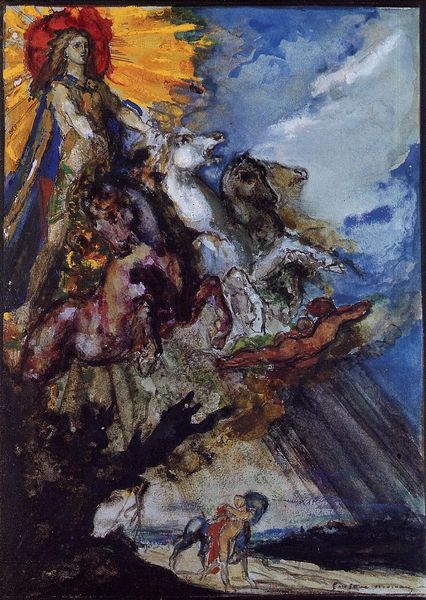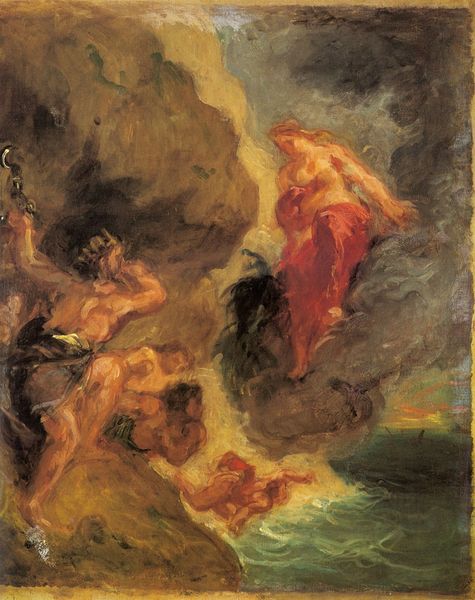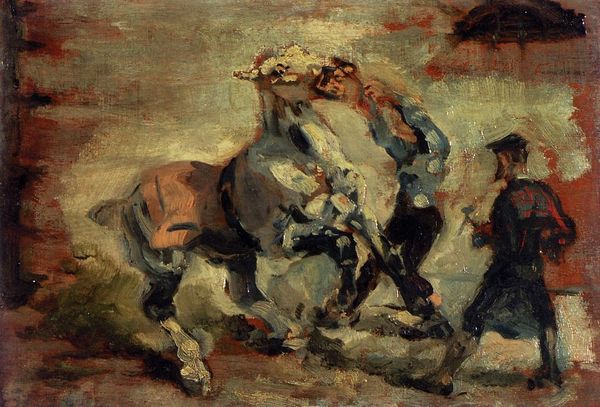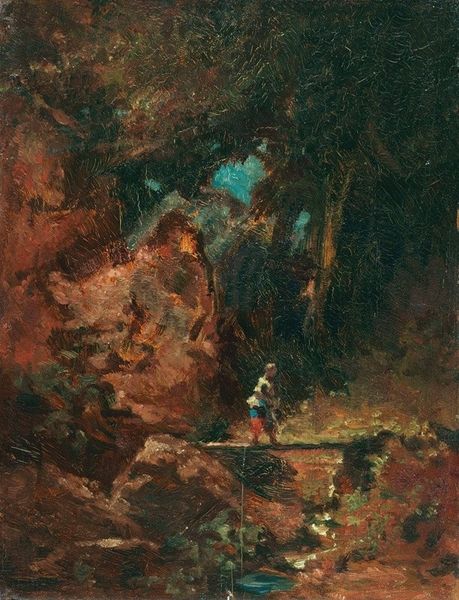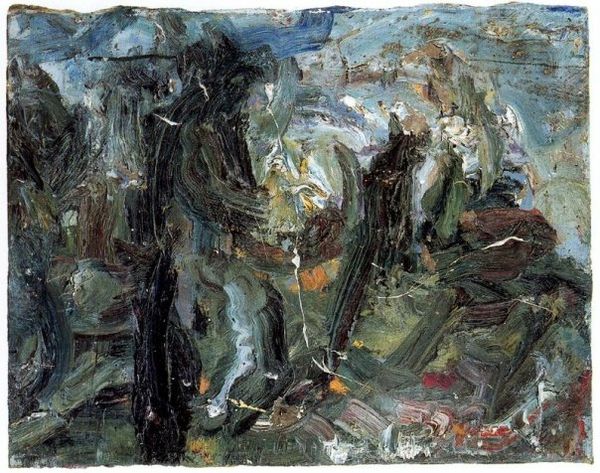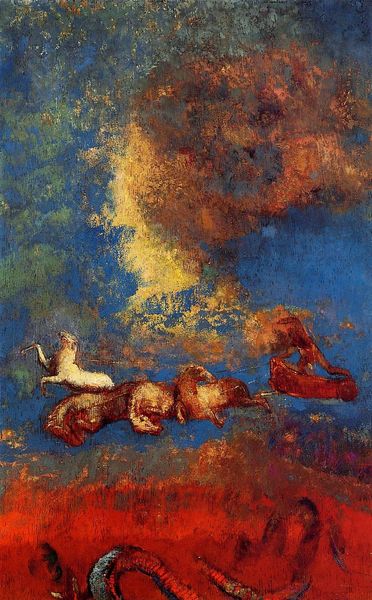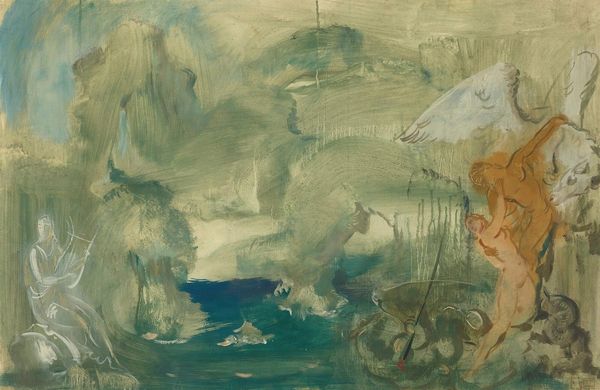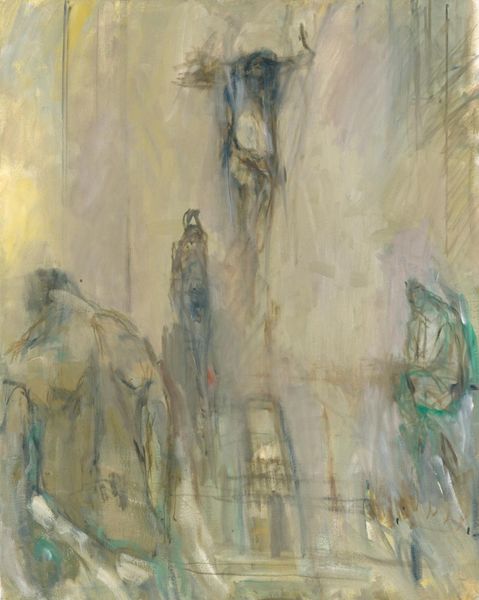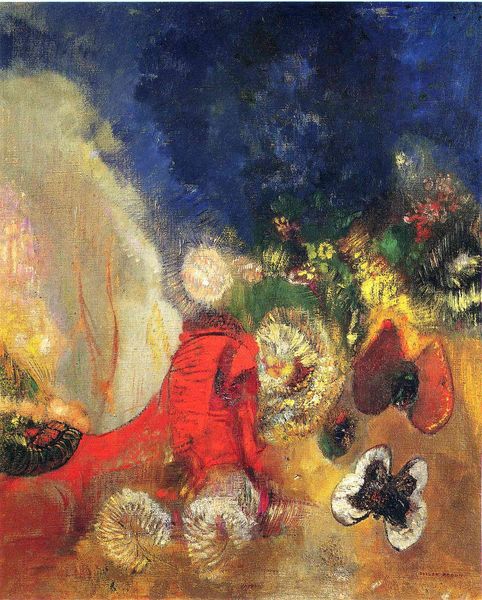
painting, plein-air, oil-paint, impasto
#
portrait
#
night
#
narrative-art
#
painting
#
plein-air
#
oil-paint
#
landscape
#
figuration
#
oil painting
#
impasto
#
horse
#
christianity
#
men
#
painting painterly
#
symbolism
#
history-painting
Copyright: Public domain
Curator: Welcome! Here we have Odilon Redon's "Saint George and the Dragon," created in 1909. It's oil on canvas, part of a private collection, and truly captivates with its mystical portrayal of the classic tale. Editor: Immediately, what strikes me is how dreamlike and otherworldly it is. It’s as if a medieval tapestry has dissolved into a watercolor wash. There's a sense of quiet foreboding... Curator: Indeed. Redon, known for his symbolist leanings, moves away from a literal depiction. Instead, he seems interested in the emotional landscape. The colors are muted, the forms suggestive, creating an atmosphere thick with symbolic meaning. Note the textural impasto on the foreground elements. Editor: Precisely. Look at how Saint George is almost a spectral figure. He isn't valiantly charging as much as he seems to be emerging from the landscape itself. Is he flesh or is he a spirit? Even his armor is translucent and diaphanous. The background cliffs have that "ruin-like quality" or remnants from another time. Curator: Redon plays with our perceptions, certainly. It moves past any purely representational work; for Redon, the canvas is a terrain for the psyche. I love the way the background sort of rises like smoke and blends and blurs into an imagined sky. Editor: I agree. And the Dragon... where is it, exactly? We sense its presence through the tension, in the shadowy spaces between the forms. Is that his red flame billowing underneath the Saint’s path? Curator: It feels more elemental than literal—the dragon as an abstract force of chaos and hidden violence, which then makes Saint George representative of courage and self-sacrifice. Think about how this scene relates to notions of faith. Redon offers an interpretive lens onto faith that suggests internal battles more than literal monsters, you know? Editor: It all hangs together brilliantly. The loose, painterly strokes serve the image well. This is definitely a scene not just to be seen, but felt, embodying its story on a more human level. It seems we leave understanding Saint George not so much as a heroic character, but more like a symbolic one. Curator: Exactly. It is about our inner quests. Next to many purely symbolic portraits that are clearly designed as symbolic—which this is not—this historical representation has the virtue of still feeling so contemporary to those universal struggles. It is so nice to linger and wrestle with that. Editor: It’s definitely the sort of piece that grows on you—and makes you grow a little bit yourself too. Thanks!
Comments
No comments
Be the first to comment and join the conversation on the ultimate creative platform.
